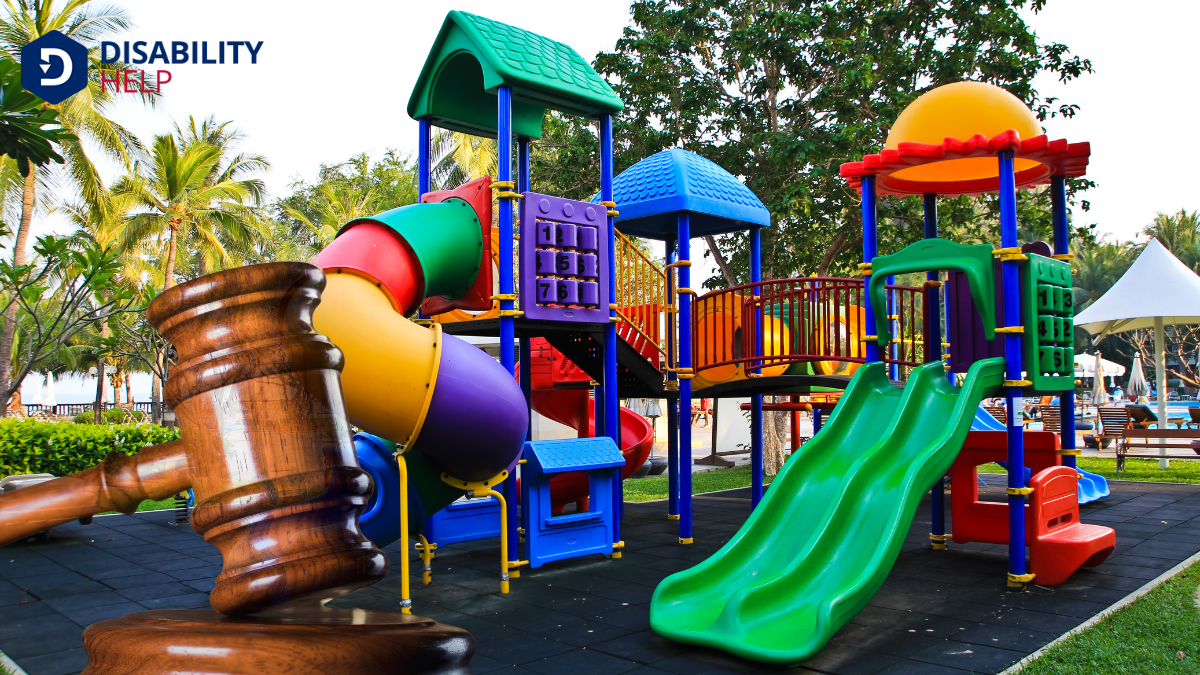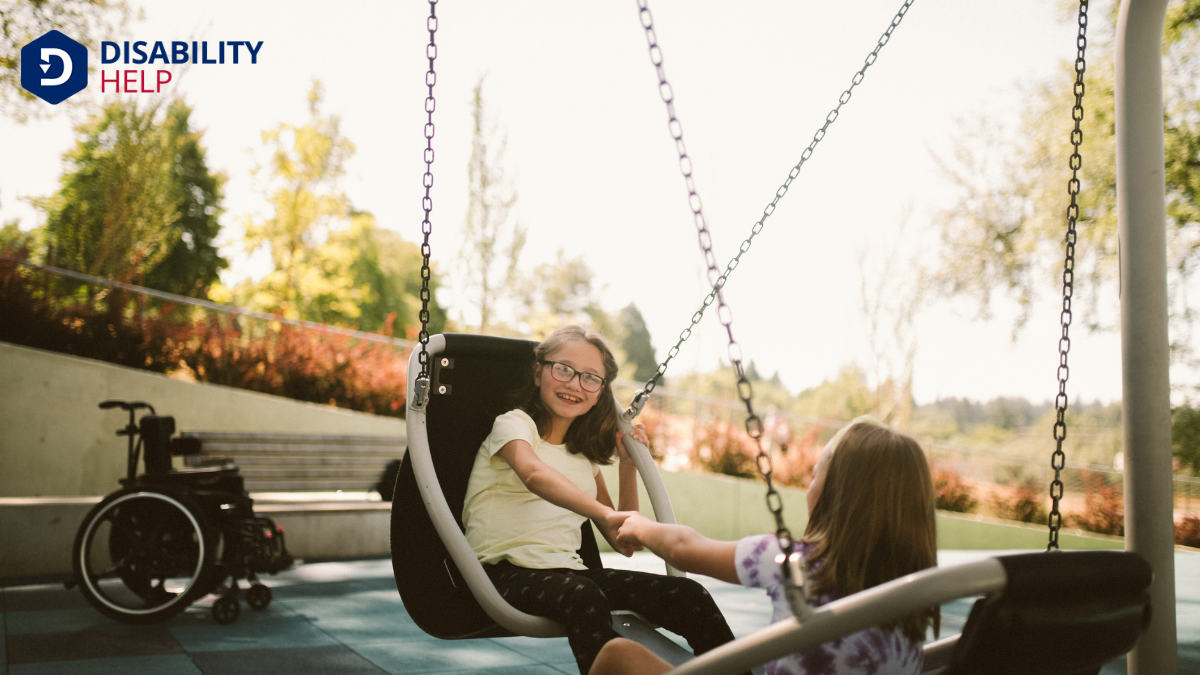As we explore the question of whether playgrounds are required to be accessible for children with disabilities, we must consider the legal framework and societal values that drive inclusivity. The ADA plays a vital role in shaping these spaces, but compliance can be challenging. How do communities balance legal obligations with practical implementation? Let's uncover the complexities and benefits of creating playgrounds that welcome all children, regardless of their abilities.
Key Takeaways
- The ADA mandates public playgrounds to accommodate children with disabilities, ensuring accessibilityThe design of products, devices, services, or environments to be usable by people with disabilities.....
- Accessibility standards require playground equipment and surfaces to be usable by children with various disabilities.
- State and local regulations may impose additional accessibility requirements beyond federal ADA standards.
- Enforcement mechanisms hold entities accountable for compliance with playground accessibility regulations.
- Grants and funding opportunities support the development of accessible playgrounds for children with disabilities.
Understanding Accessibility Standards for Playgrounds
When we talk about playground accessibility, understanding accessibility standards is crucial. These standards guide us in creating spaces where all children, regardless of ability, can play safely and inclusively.
We must consider aspects like surface materials, equipment access, and pathways that accommodate mobility aidsDevices designed to help individuals move around more easily, such as canes, walkers, or wheelchairs.... By adhering to these guidelines, we guarantee that playgrounds aren't just physically accessible but also enjoyable for every child.
It's important to remember that accessibility isn't just about compliance; it's about fostering inclusivity and joy. When we design with these standards in mind, we create environments that encourage interaction and play among children with diverse needs.
Let's commit to understanding and implementing these standards so that every child can experience the fun and freedom that playgrounds offer.
Legal Framework Governing Playground Accessibility

Although playgrounds are places of joy and exploration, guaranteeing their accessibility requires maneuvering a complex legal landscape.
We need to understand key regulations that guide us in creating inclusive play spaces. The Americans with Disabilities Act (ADA)A U.S. law that prohibits discrimination against individuals with disabilities in all areas of publi... is central, mandating that public playgrounds accommodate children with disabilities.
But what does this entail for us?
- Accessibility standards: These guarantee that equipment and surfaces are usable by children with various disabilities.
- Enforcement mechanisms: They hold entities accountable for compliance, promoting fairness.
- State and local regulations: They might impose additional requirements, enhancing or complicating federal standards.
- Funding opportunities: Grants and programs can support the development of accessible playgrounds, making it financially feasible.
Challenges in Implementing Inclusive Playgrounds
Understanding the legal framework is only part of the journey toward building inclusive playgrounds. We face several challenges that require attention and innovative solutions.
First, budget constraints often limit the ability to incorporate diverse structures and materials that cater to all abilities. Designing a playground that meets diverse needs can be costly, especially when considering specialized equipment.
Moreover, space limitations can hinder the inclusionThe practice of creating environments in which any individual or group can be and feel welcomed, res... of necessary features, making it difficult to accommodate children with varying mobility needs.
We also encounter obstacles in traversing complex regulations, which can delay projects and increase costs.
Finally, there's a need for increased awareness and education among designers and contractors to prioritize inclusivity from the start.
Together, we must address these challenges to create truly welcoming play environments for every child.
The Role of Community and Advocacy in Promoting Inclusivity
Communities play an essential role in championing inclusivity in playgrounds, often serving as the driving force behind change.
We find that when we unite, our voices become powerful advocates for accessible play spaces. Grassroots efforts can spark significant transformations, creating environments where all children feel welcome.
By coming together, we can:
- Raise awareness of the importance of inclusive designs.
- Collaborate with local governments to prioritize funding for accessible features.
- Engage with playground designers to guarantee they include diverse needs.
- Share personal stories to highlight the impact of exclusion and the need for change.
Our collective action can lead to positive outcomes, making sure playgrounds are spaces where every child, regardless of ability, can play and grow together.
Benefits of Accessible Playgrounds for All Children

When we create accessible playgrounds, we're not just opening doors for children with disabilities but enriching the play experiences for all children.
These inclusive spaces allow kids of all abilities to play together, fostering friendships and teaching empathyThe ability to understand and share the feelings of another, particularly important in understanding.... Accessible playgrounds encourage diversityThe inclusion of individuals from a wide range of backgrounds, including people with disabilities. and understanding, as children learn to appreciate differences from an early age.
Moreover, such environments offer varied play opportunities, sparking creativity and imagination. Everyone benefits from equipment designed for multiple uses, as it promotes physical activity and cognitive development.
Parents and caregivers can also relax, knowing that their children can play safely and inclusively. By prioritizing accessibility, we guarantee that every child, regardless of ability, has the chance to participate, learn, and grow in a supportive community.
Frequently Asked Questions
What Types of Playground Equipment Are Best for Children With Sensory Disabilities?
We think sensory-friendly playground equipment should include tactile panels, musical instruments, and swings with supportive harnesses. These options engage multiple senses, promote interaction, and guarantee a welcoming environment. Let's prioritize inclusivity for children with sensory disabilities.
How Do Accessible Playgrounds Impact Property Values in the Neighborhood?
Let's consider how accessible playgrounds boost neighborhood appeal. They foster inclusivity and community engagement, often leading to increased property values. Neighbors benefit from a welcoming environment, while buyers are attracted to areas prioritizing accessibility and diversity.
Are There Grants Available for Building Accessible Playgrounds?
Yes, there are grants available. We can explore options from federal, state, and private foundations dedicated to accessibility and community development. Let’s research together, ensuring we find the best resources to support building inclusive playgrounds.
How Do Weather Conditions Affect the Accessibility of Playgrounds?
It is understood that weather impacts playground accessibility. Rain can make surfaces slippery, snow creates barriers, and extreme heat affects material safety. Let’s guarantee designs consider these factors, so all children can enjoy play, regardless of conditions.
What Maintenance Is Required to Ensure Playgrounds Remain Accessible?
We need regular inspections to fix damaged equipment, clear debris, and guarantee surfacing remains stable. Let's prioritize repainting faded markings and checking for hazards. Consistent maintenance helps playgrounds remain safe and accessible for everyone, including children with disabilities.
Conclusion
In summary, we must recognize the importance of accessible playgrounds for children with disabilities. The ADA mandates these standards, but it's up to us as a community to guarantee they're implemented effectively. By advocating for inclusive play spaces, we not only comply with the law but also create environments where all children can thrive. Let's work together to overcome challenges and embrace the benefits of inclusive play, fostering a world where every child can play and grow together.






